He who distinguishes the true flavor of what he eats will never be a glutton; he who does not cannot be anything else. - Henry David Thoreau
“Gluttony is a vice that derives from hunger and whose intensity is inversely proportional to the development of intelligence….We observe this in children, the elderly, etc… Well, according to my research, the devout are the greediest of all men. We know the gluttony of the monks of the Middle Ages, who, following Rabelais, ‘all held Gaster (gluttony) for their great God, adored him as God, sacrificed to him as to God, omnipotent.’ (Pantagruel, 1532) The same applies to the sweet tooth of the Bernardins, the abbots of the former regime, and today's nuns, who are crazy about sweets and bonbons. In the menus of bishops' meals, conference dinners, etc. sweet dishes play a major role. In fact, the religious, priests, etc, have invented a host of excellent dishes….The first oyster park was imagined by the abbot Bonnetard, parish priest of Teste. The truffle was discovered by the monk Brother Landrin. The production of Champagne was invented by Dom Pérignon, monk of the Hautvilliers Abbey…. The cake called La Flognarde (was invented) by the abbot Father Flognard, parish priest in Limousin…" (from Histoire Naturelle du Dévot; Natural History of the Devout by Gaëtan Delauney in 1879).
Ah, the clafoutis. Clafoutis has become one of France’s emblematic summer desserts and a well known and popular dish far beyond the country’s borders. Fat, dark, juicy cherries are scattered around the bottom of a pie plate or baking dish, smothered under a thick, creamy, barely sweetened crêpe or flan batter, and baked. Iconic. The term clafoutis only first appeared in print around the mid-19th century, defined in the Glossaire du Centre de la France by Count Joubert in 1856. If it was used by the locals in the Limousin region, from whence the dish came and where it is part of the culinary tradition, it is extremely difficult for me to say as nothing written predates this. Clafoutis - or then clafouti or glafouti - was a dialectic term from the ancient claufir denoting “fastened with nails” as the dessert seemed to be “nailed” to the dish by the cherries.
But I am not here to talk about the clafoutis. I’m here to introduce you to the flognarde. “What is a flognarde?" you ask? The cake purportedly invented by Delaney’s Father Flognard in his gluttonous glory? Ah. Food columnist Maurice Cluzelaud, writing in the November 1, 1937 issue of La Revue Économique du Centre-Ouest, describes “the amiable flognarde, the humble sister of the clafoutis,” the nomenclature for this traditional dessert he borrowed from the then President of the Limousins in Paris, one Mr. Talamon. “A flan-like pastry, flognarde can be topped with raisins and sprinkled with sugar to round off a meal, especially when it's nicely puffed up,” he goes on, adding “In Limousin, we say of a young boy who has come out of the depths of his native farmland that he looks "flognard", like the soft and sweet ‘flognarde’."
The flognarde - or flaugnarde - like the clafoutis, is a traditional dessert from the Limousin region of France and its neighboring region Auvergne, both part of ancient Occitania. While the origine of the dish is unknown, we do know the name comes from the old French Occitan dialect fleugne/fleunhe or flaunhard, meaning soft, gentle, or fluffy. While the clafoutis is a summer dish made most typically with cherries, the flognarde is the autumn version of the dessert made with the season’s apples or pears, or sometimes prunes. The flognarde is often flavored with cinnamon, vanilla, rum, orange flower water, or lemon zest. The base of the flognarde, like the clafoutis, is a crêpe or flan batter and when baked often has the aspect of a pillowy, puffed crêpe right out of the oven. Its texture, once cooled slightly to warm or allowed to come completely to room temperature - the flognarde is served either way - is dense yet smooth and creamy, the fruit bringing the sweetness to the confection.
Frédéric Mistral defines flognarde in his Lou Tresor dóu Felibrige ou Dictionnaire provençal-français, one of the first major dictionaries of the Occitan language, published in 1879: Falugnard, Flougnard, Fléugnard, Fleinard, Fraugnard, Flaugnac (the many spellings of the word); mignard (miniature or dainty, a small pastry) avec niaiserie (with nonsense), or one who complains for very little; soft, weak, indolent; soft and caressing.”
I found it very curious that clafoutis came from the word meaning “fastened with nails”, referring to the visual aspect of the dish, making me wonder why then flognarde came from the word meaning soft and downy, or weak and indolent. Until I realized that it must have to do with the apples or pears: while cherries hold their shape during baking, apple and pear slices become soft, meltingly soft… caressingly soft. Fleugne, flaunhard….
Colette, the author Sidonie-Gabrielle Colette, wrote lovingly about the flognarde, a nostalgic remembrance of the simple, rustic, comfort food of her childhood, in her 1944 book Paris de ma Fenêtre. A flognarde was the special treat made to reward the children, including the young Colette, when they had worked well. “The flognarde becomes a huge blister that fills the oven, turning golden, brown, bursting here, swelling there... At the height of its eruptions, remove it, sweeten it with a little powdered sugar and share it while it's boiling hot.” Her description of the flognarde is perfect, hugely puffed up, golden brown, erupting in humps and bulges of fruit.
This rustic treat is every bit as worthy of fame as her sister, the clafoutis. The lightly sweetened, lightly flavored batter, which, I must add, is extremely quick and easy to prepare, is the perfect balance to highlight the fruity sweetness of the pears or apples. And the melting tenderness of the cooked fruit is perfect for the creamy, toothsome (yes, I used the word toothsome) flognarde filling.
The celebrated 20th century writer on gastronomy Maurice Edmond Sailland, best known under his pen name Curnonsky, wrote that the cuisine of the Limousin region was “sans beurre et sans reproche. En deux mots, saine et sainte.” In his words, “without butter and without reproach. In two words, wholesome and holy." So no butter is used in making a flognarde; while the apples are not traditionally precooked, I have decided to do just that, and, yes, I used butter.
Traditional apple flognarde with a twist
1 tablespoon (15 grams) or so slightly softened butter for the pie plate
2 tablespoons (30 grams) butter for the apples
3 to 4 apples, peeled, cored, and sliced - I use crispy, sweet, slightly tart Reine de Reinette
4 eggs, whisked to blend
¾ cup + 2 tablespoons (125 grams) flour
½ cup (100 grams) sugar
Pinch - about ⅛ teaspoon - salt
1 cup (250 ml) milk (I use low fat)
2 tablespoons apple liqueur or dark rum - this can be replaced with a teaspoon vanilla extract
Preheat the oven to 350°F (180°C). Butter a 10-inch (25-cm) - or slightly larger but not smaller! - pie plate that is at least 1 ½ inches (3 ¼ cm) deep, making sure to butter the corners and sides well.
Heat the 2 tablespoons butter in a frying pan or skillet until melted and sizzling. Add the apple slices and cook, tossing and stirring the apple slices to coat them all with the butter and for even cooking. Cook in the sizzling butter for 5 or 6 minutes until the apples are soft but still hold their shape. Scrape the apple slices into the pie dish and spread evenly.
Blend the whisked eggs, flour, sugar, and salt in a large mixing bowl, whisking or stirring vigorously until lump-free, smooth, and creamy. Slowly whisk in the milk and the liqueur or rum until well blended.
Pour the liquid filling over the apples, making sure the apple slices remain well distributed. The filling should come up to the rim of the pie dish.
Bake the flognarde for 45 minutes until well puffed. The edges, sides, and bottom should be golden.
Allow the flognarde to cool enough so that it sinks a bit before dusting with powdered sugar and slicing.
Thank you for subscribing to Life’s a Feast by Jamie Schler where I share my recipes, mostly French traditional recipes, with their amusing origins and history. I’m so glad that you’re here. You can support my work by sharing the link to my Substack with your friends, family, and your social media followers. If you would like to see my other book projects in the making, read my other essays, and participate in the discussions, please upgrade to a paid subscription.
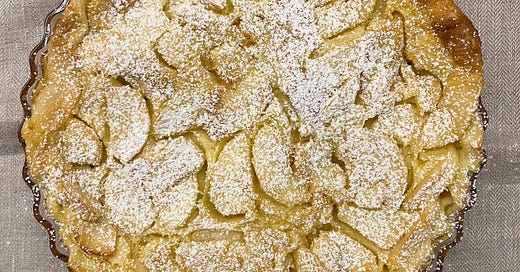



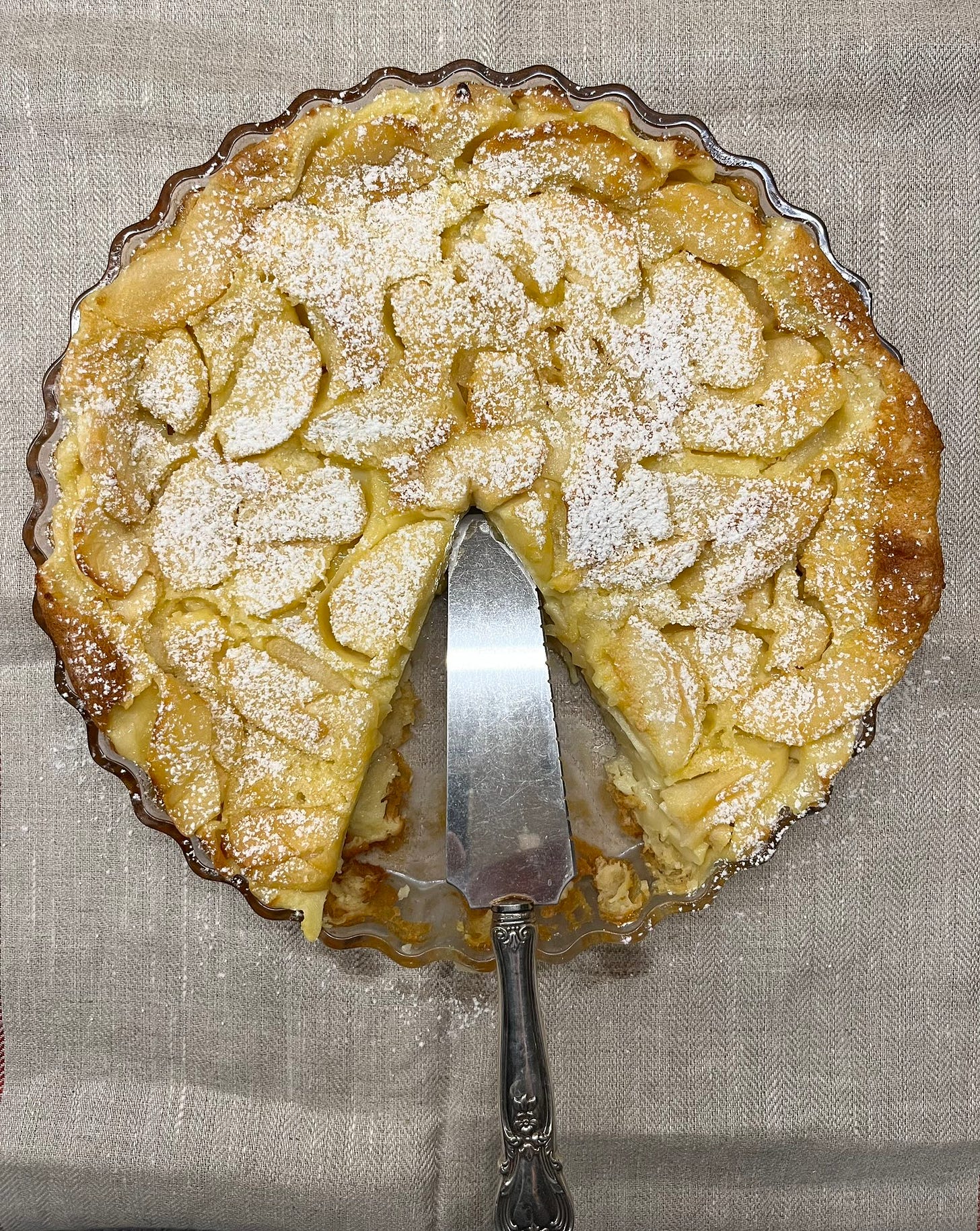
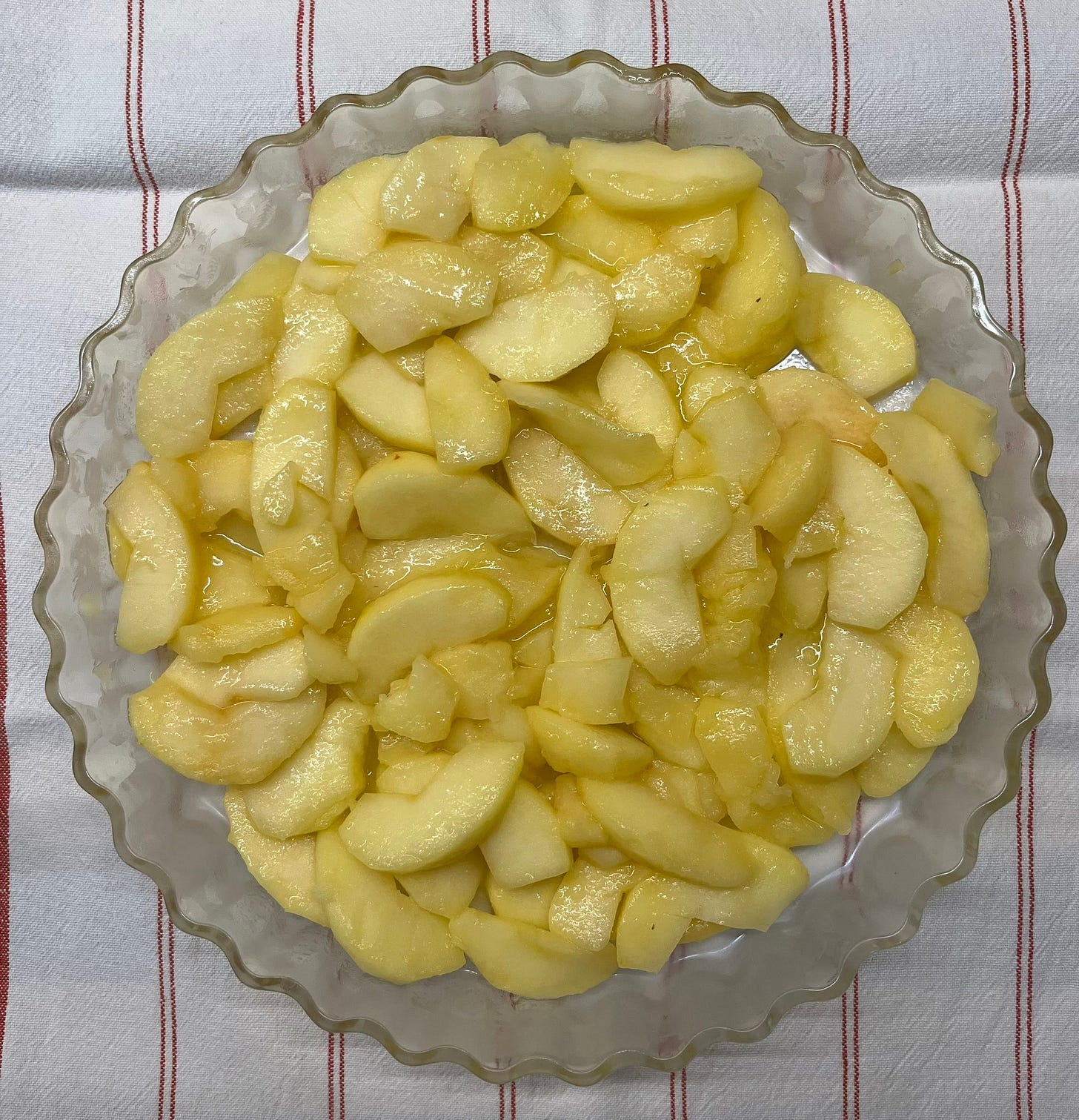
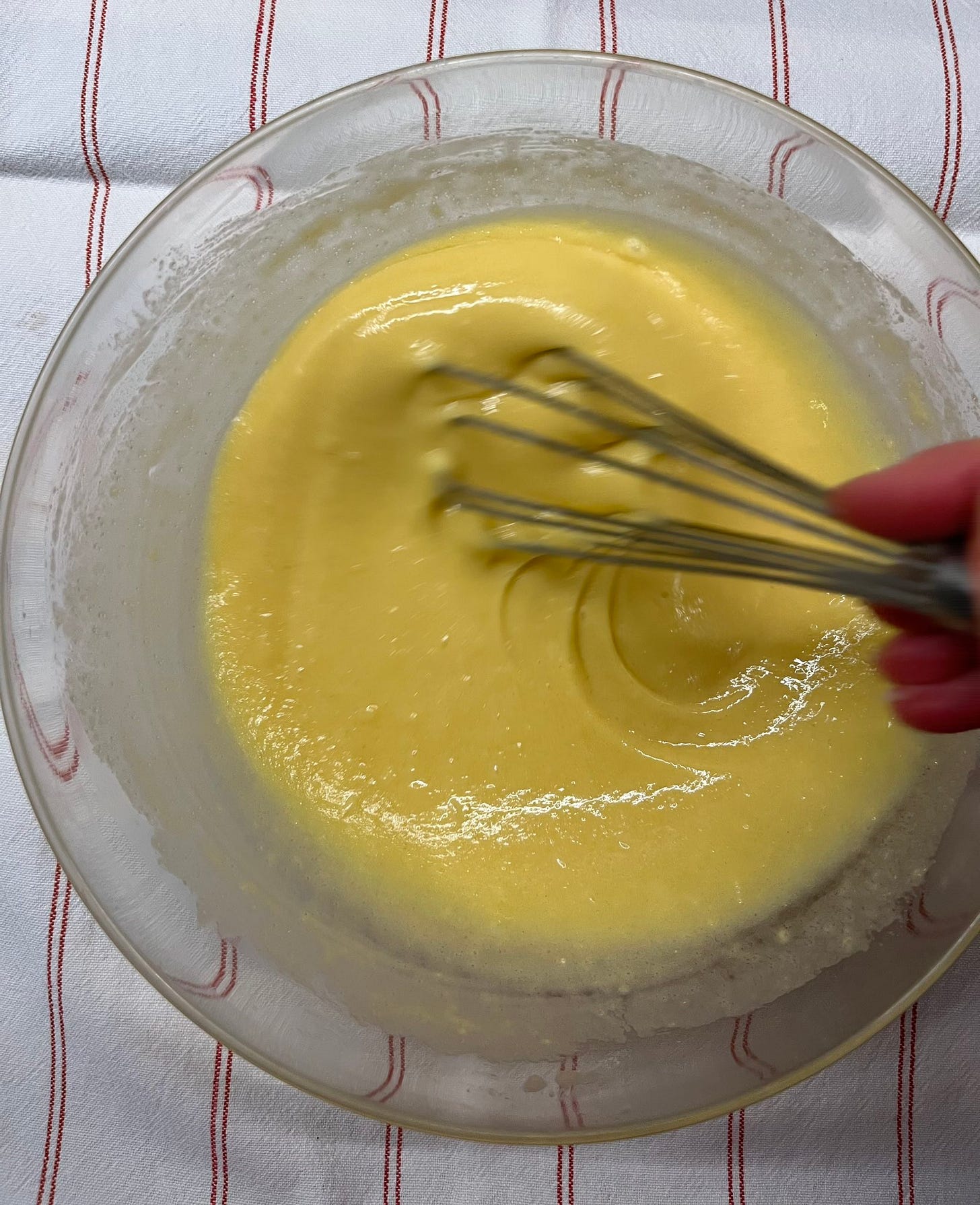

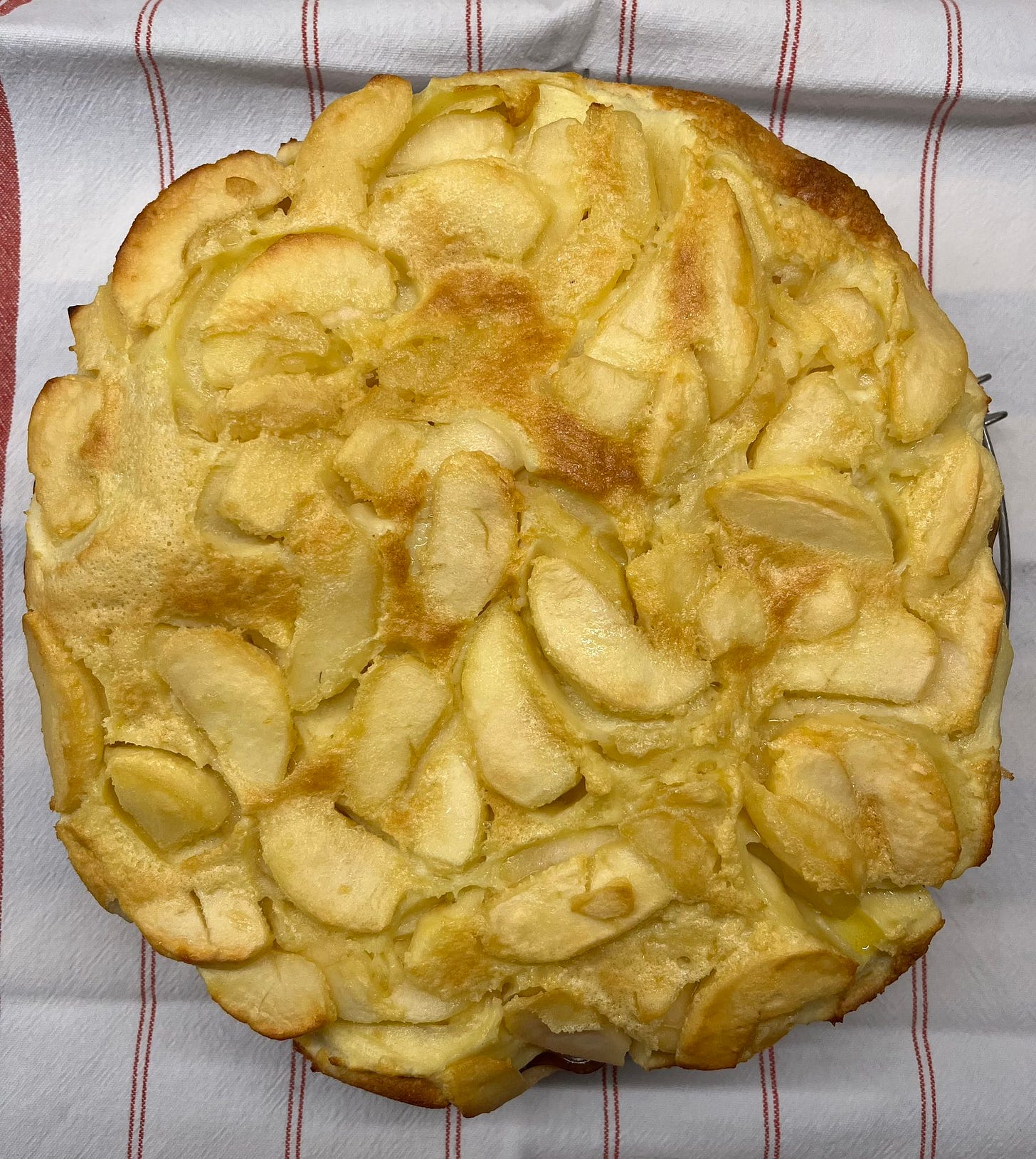
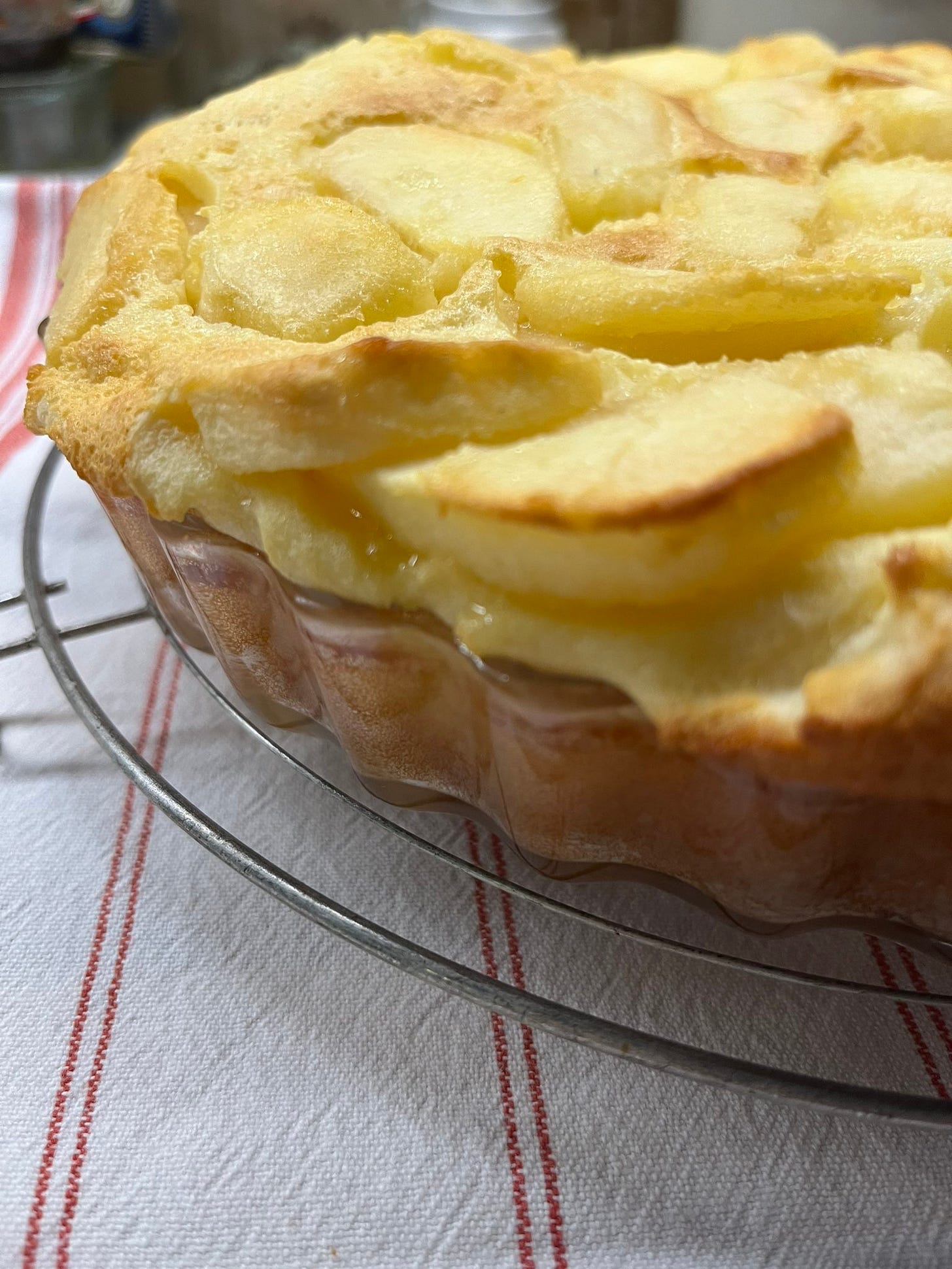
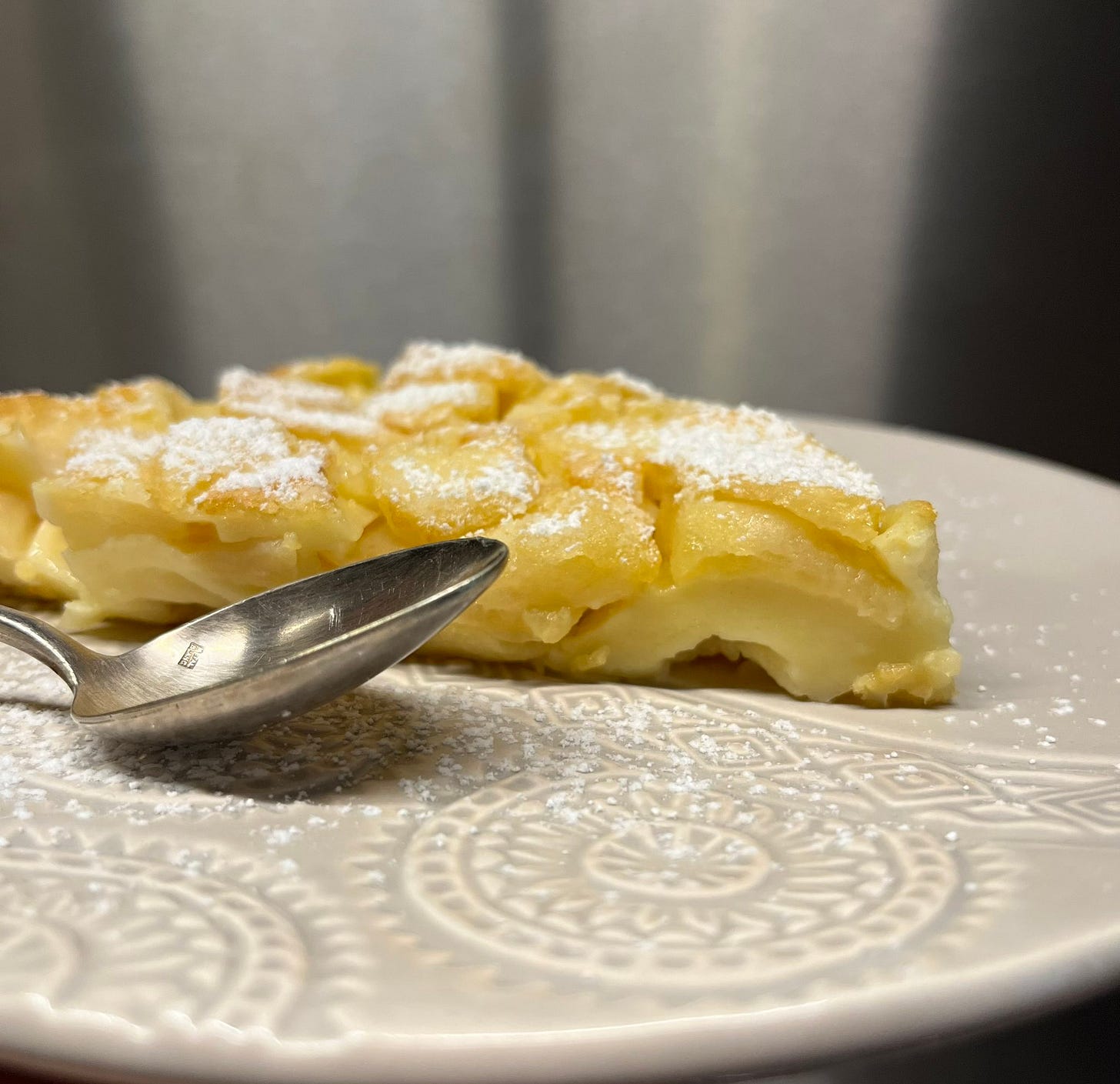
Can't wait to try this! And as usual, mes compliments on the depth of your research -- fascinating stuff! Thanks, Jamie!
New subscriber - I love the story & the recipe. We have a Pippin apple tree that abundantly fruited this year. I can almost taste this already! Thank you!